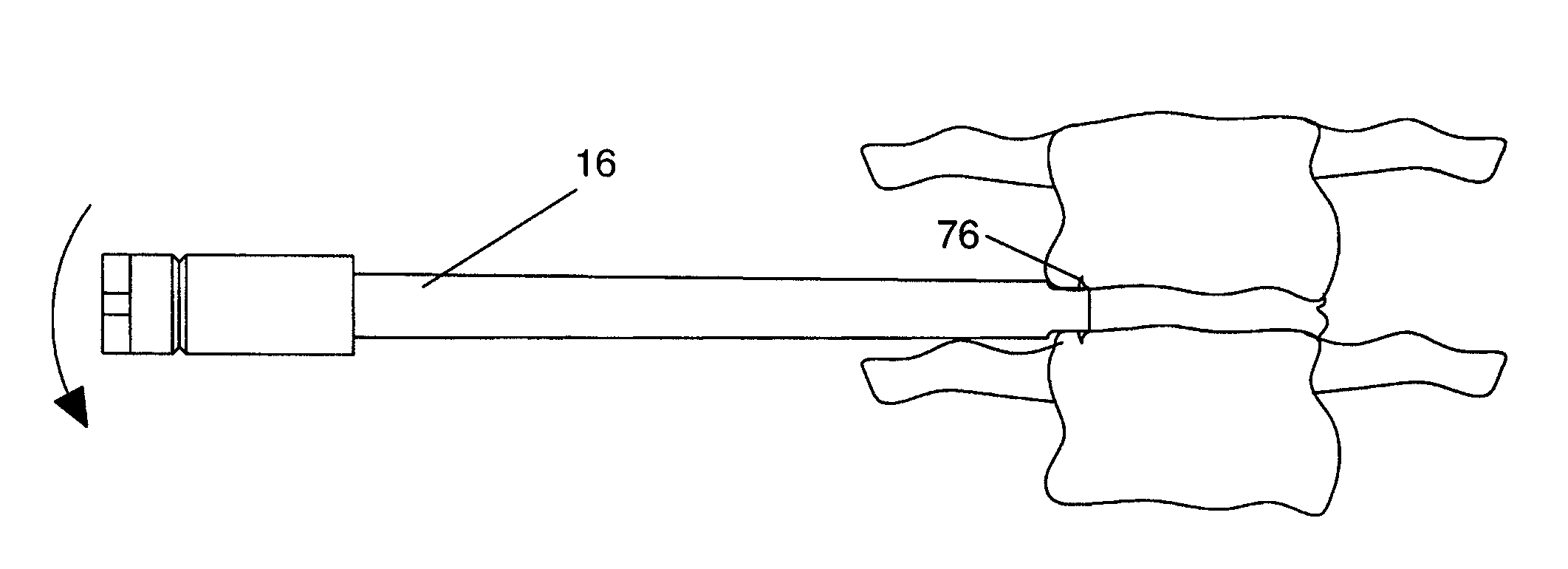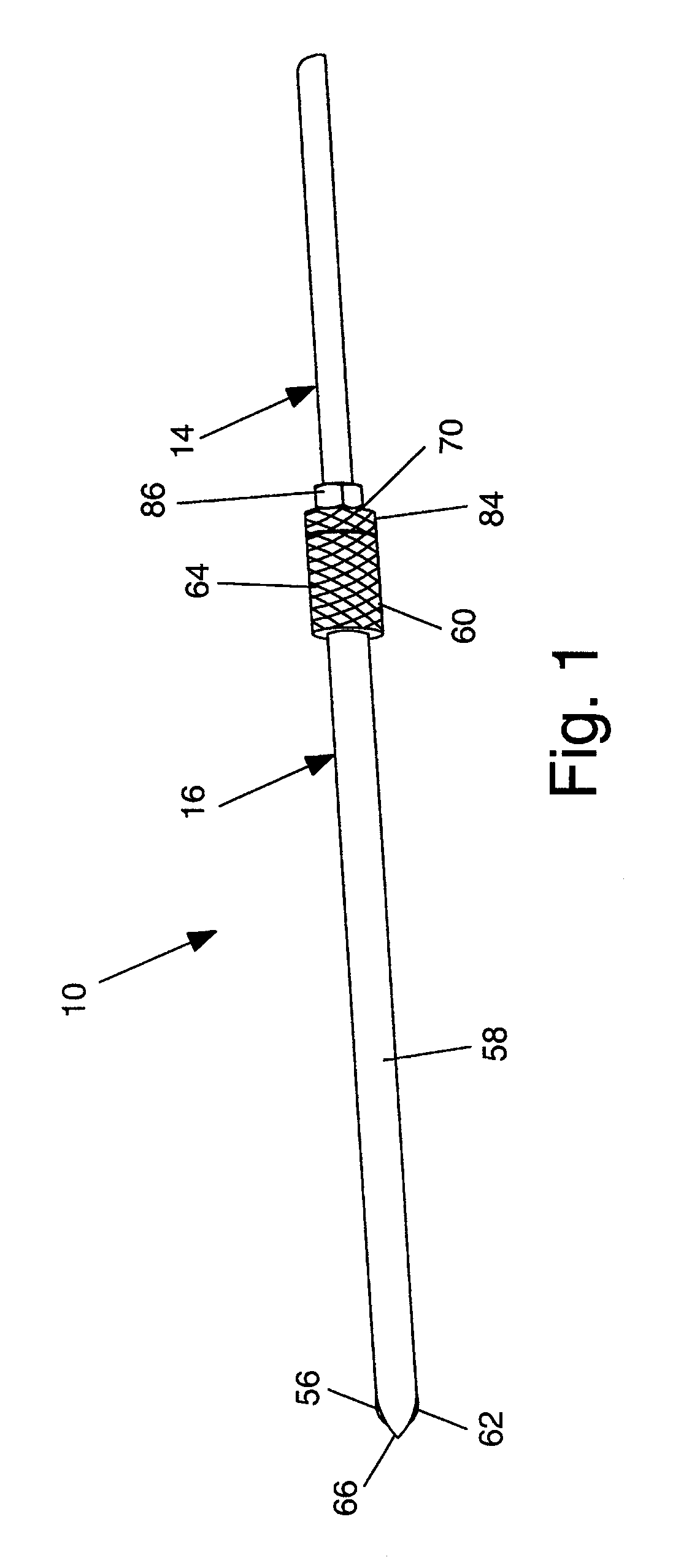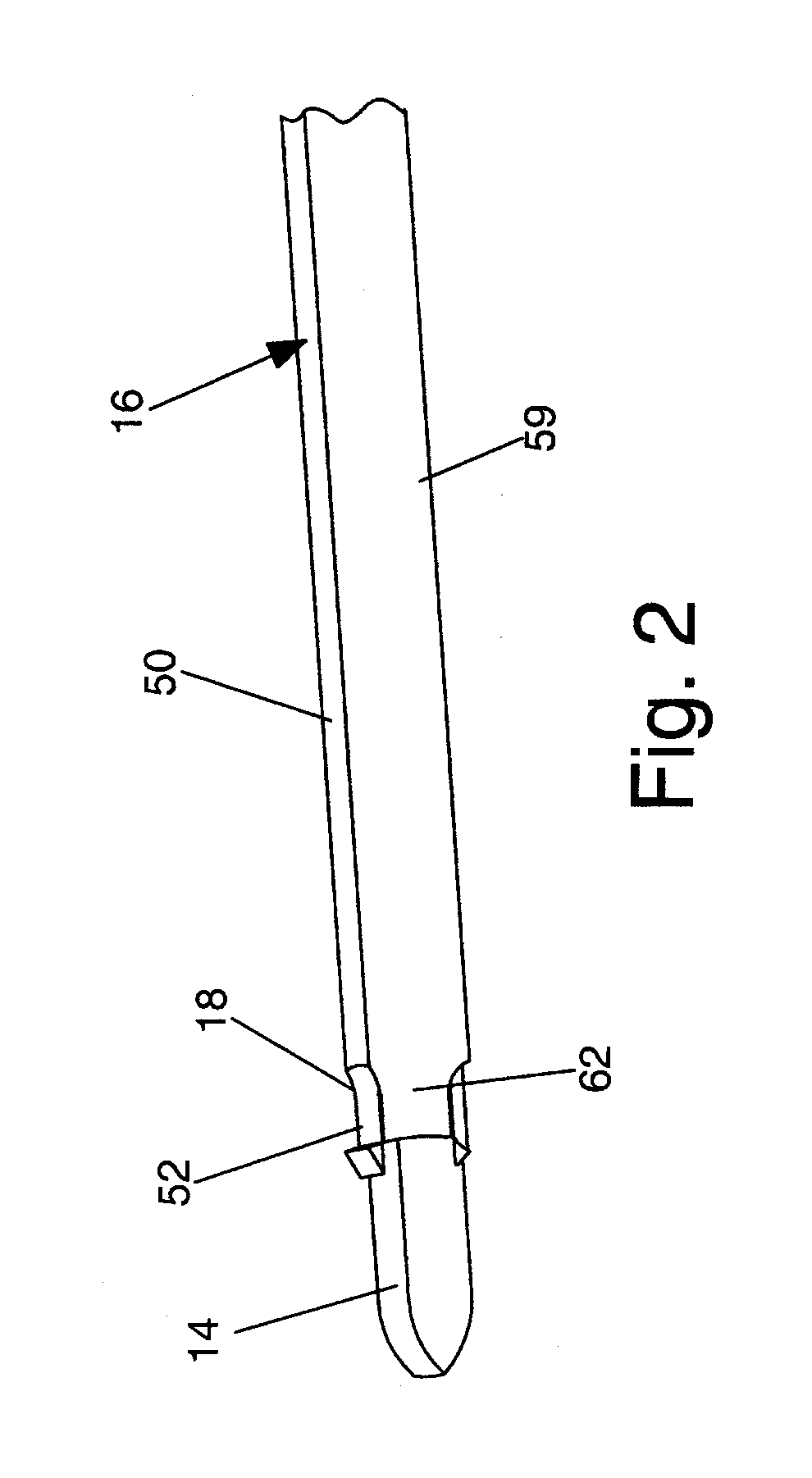Access assembly for anterior and lateral spinal procedures
a technology for accessing and lateral spinal cords, applied in the field of anterior and lateral spinal cord stabilization, can solve the problems of pain, loss of function, complete paralysis of legs, loss of bowel and bladder control,
- Summary
- Abstract
- Description
- Claims
- Application Information
AI Technical Summary
Benefits of technology
Problems solved by technology
Method used
Image
Examples
Embodiment Construction
[0041]While the present invention is susceptible of embodiment in various forms, there is shown in the drawings and will hereinafter be described a presently preferred embodiment with the understanding that the present disclosure is to be considered an exemplification of the invention and is not intended to limit the invention to the specific embodiments illustrated.
[0042]Referring generally to FIGS. 1-16, an access assembly 10 constructed and arranged for anterior, lateral anterolateral spinal procedures is illustrated. The present invention provides for the entire surgical procedure to be performed through a relatively small incision, and may be performed in either the thoracic or lumbar spine. In the preferred embodiment, the access assembly 10 comprises a guide wire 12, a distractor 14, and a dynamic tube assembly 16 that includes a manually operable locking member 18 for securing the dynamic tube assembly to a bony structure.
[0043]The guide wire 12 is provided for initial inser...
PUM
 Login to View More
Login to View More Abstract
Description
Claims
Application Information
 Login to View More
Login to View More - R&D
- Intellectual Property
- Life Sciences
- Materials
- Tech Scout
- Unparalleled Data Quality
- Higher Quality Content
- 60% Fewer Hallucinations
Browse by: Latest US Patents, China's latest patents, Technical Efficacy Thesaurus, Application Domain, Technology Topic, Popular Technical Reports.
© 2025 PatSnap. All rights reserved.Legal|Privacy policy|Modern Slavery Act Transparency Statement|Sitemap|About US| Contact US: help@patsnap.com



